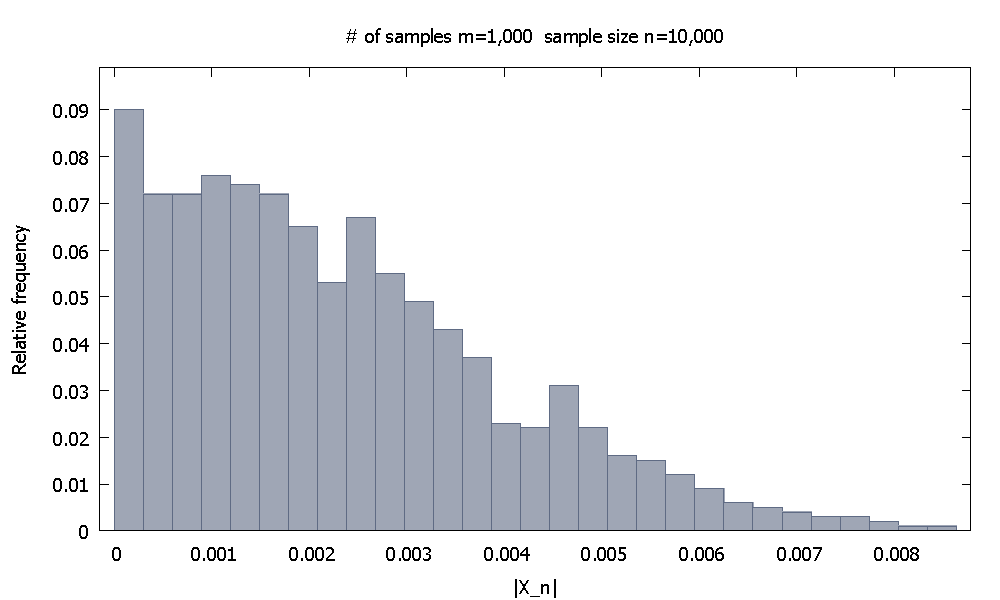Asymptotic results cannot be proven by computer simulation, because they are statements involving the concept of infinity. But we should be able to obtain a sense that things do indeed march the way theory tells us.
Consider the theoretical result $$\lim_{n\rightarrow\infty}P(|X_n|>\epsilon) = 0, \qquad \epsilon >0$$
where $X_n$ is a function of $n$ random variables, say identically and independently distributed. This says that $X_n$ converges in probability to zero. The archetypal example here I guess is the case where $X_n$ is the sample mean minus the common expected value of the i.i.d. r.v.'s of the sample,
$$X_n = \frac 1n\sum_{i=1}^nY_i - E[Y_1]$$
QUESTION: How could we convincingly show to somebody that the above relation "materializes in the real world", by using computer simulation results from necessarily finite samples?
Please do note that I specifically chose convergence to a constant.
I provide below my approach as an answer, and I hope for better ones.
UPDATE: Something in the back of my head bothered me -and I found out what. I dug up an older question where a most interesting discussion went on in the comments to one of the answers. In there, @Cardinal provided an example of an estimator that it is consistent but its variance remains non-zero and finite asymptotically. So a tougher variant of my question becomes: how do we show by simulation that a statistic converges in probability to a constant, when this statistic maintains non-zero and finite variance asymptotically?


 and we note that $91.80$% of the values of $|X_{20,000}|$ are below $0.0037101$. Alternatively, now $98.00$% of values fall below $0.0045217$.
and we note that $91.80$% of the values of $|X_{20,000}|$ are below $0.0037101$. Alternatively, now $98.00$% of values fall below $0.0045217$.